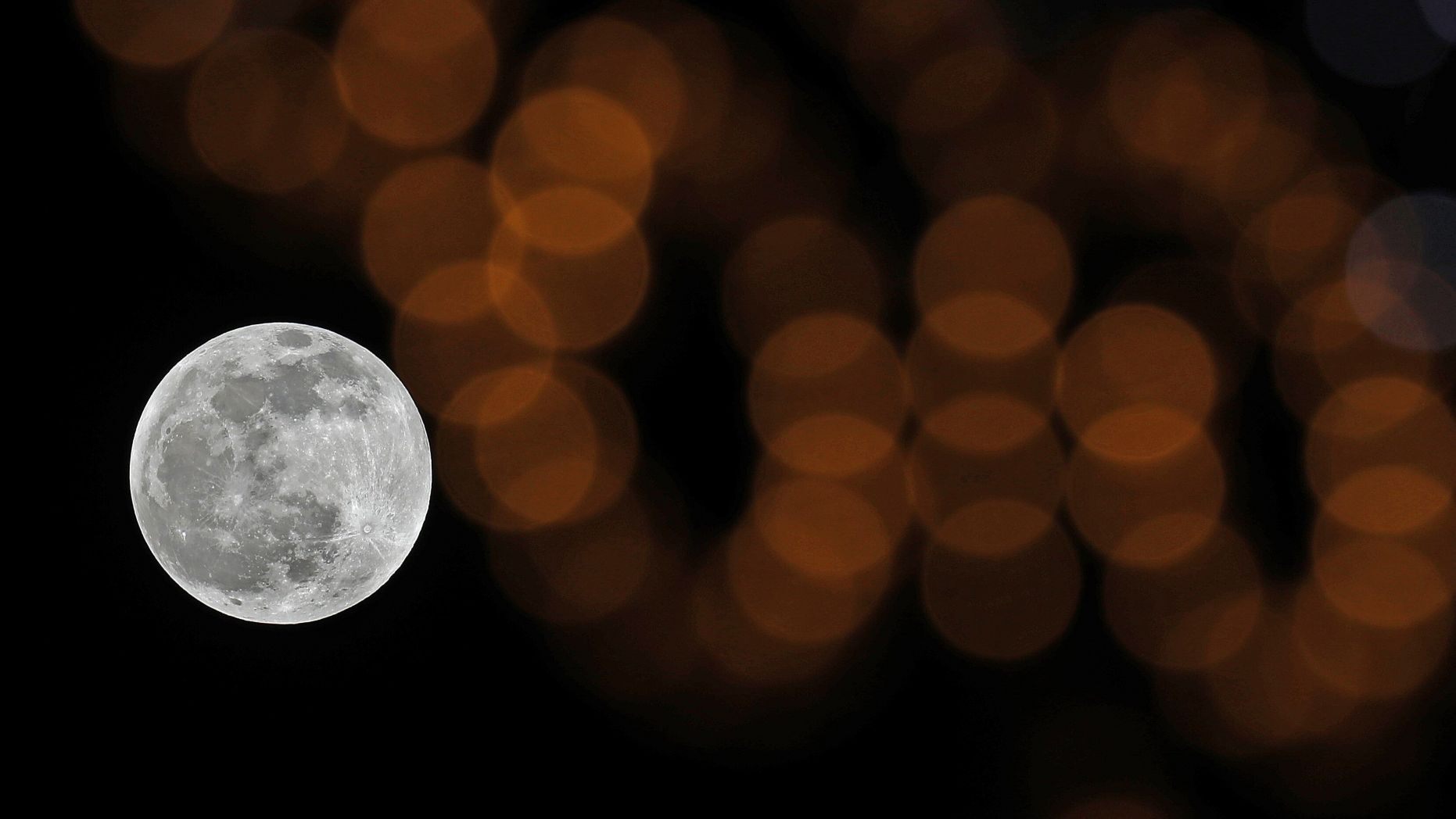
Skywatchers have been enjoying the January full moon, known as the “wolf moon,” as well as a partial lunar eclipse in parts of the world.
People from a number of countries across the globe, such as the U.K. and the Philippines, have been posting stunning images of the wolf moon and lunar eclipse on social media.
The full moon, the first of 2020, occurred at 2:21 p.m. ET Friday. Earth’s natural satellite will appear full until Sunday morning.
According to the Old Farmer’s Almanac, the January full moon was dubbed the “wolf moon” by Native Americans because it occurred at a time of year when wolves would be howling with hunger.
EarthSky notes that this full moon is also a penumbral eclipse, which means that the moon will be partially in Earth’s shadow. However, the eclipse will not be visible in most of North America.
“As the Moon passes opposite the Sun it will spend about four hours in the partial shadow of Earth,” NASA program executive Gordon Johnston wrote on the space agency’s website. “This will be while the Moon is below the horizon for most of the Americas.”
Space.com reports that a handful of areas in North America, such as Newfoundland, Canada and Greenland, will have the opportunity to see the end of the eclipse.
In January 2019, skywatchers enjoyed a rare “super blood moon” as the Earth’s natural satellite turned a stunning shade of red. The celestial event, which was also the year’s only total lunar eclipse, generated plenty of buzz.
Across much of the globe, photographers pointed their cameras skyward to capture the rare event. In New York, for example, clusters of photographers braved sub-zero temperatures to capture the eclipse above the city’s famous skyline.
The moon looms large in America’s space future. NASA’s Artemis program aims to land American astronauts on the moon by 2024 and establish a sustainable human presenc. Artemis will also make history by landing the first woman on the moon.
After Apollo 11 astronauts Neil Armstrong and Buzz Aldrin set foot on the moon on July 20, 1969, only 10 more men, all Americans, walked on the lunar surface. The last NASA astronaut to set foot on the Moon was Apollo 17 Mission Commander Gene Cernan on Dec. 14, 1972.
























